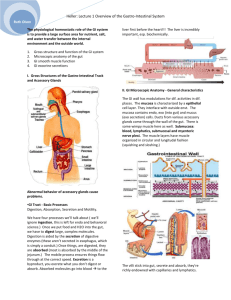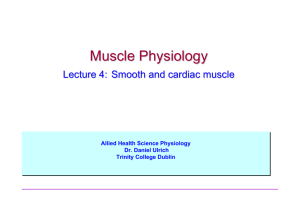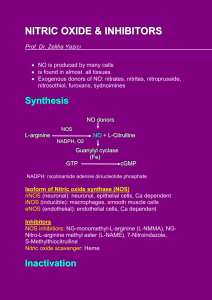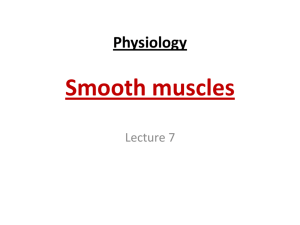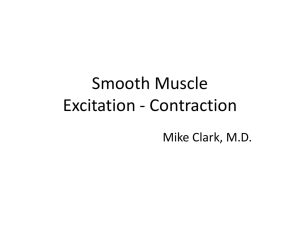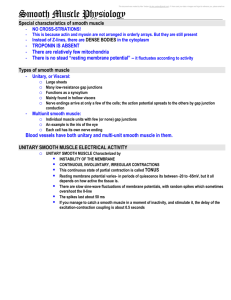Introduction to Physiology: The Cell and General Physiology
advertisement
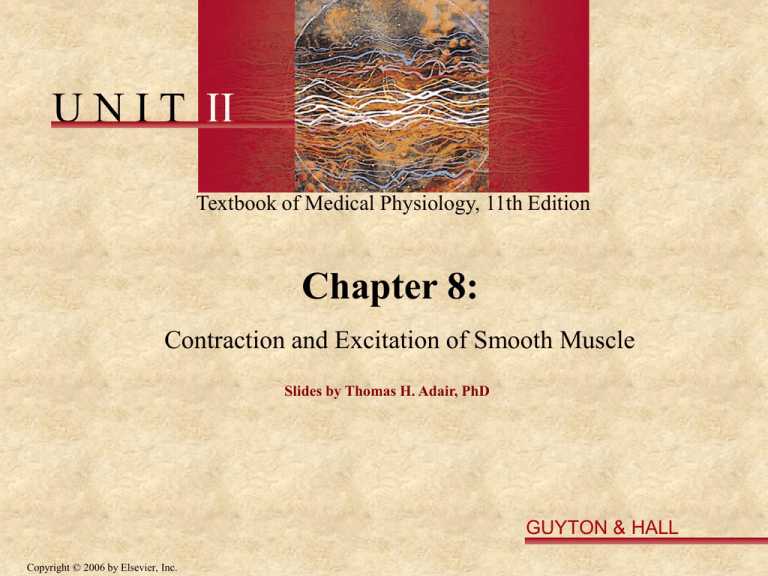
U N I T II Textbook of Medical Physiology, 11th Edition Chapter 8: Contraction and Excitation of Smooth Muscle Slides by Thomas H. Adair, PhD GUYTON & HALL Copyright © 2006 by Elsevier, Inc. Bio 411 Relevant Info: • Today – smooth muscle (Guyton Ch. 8). • Quiz at end of class over last week’s material. • Wednesday – finish smooth muscle, begin overview of nervous system/spinal nerves/cranial nerves (Moore, Introduction pp. 47-58) • Next quiz – Friday Oct. 24 • Lab tomorrow – continue working on pectoral region. May start abdominal region (dissector pp. 78-86). Copyright © 2006 by Elsevier, Inc. Types of Smooth Muscle • Mononucleate cells with no striations (smooth in polarized light). • Form muscular walls of hollow organs - gut, airways, blood vessels & urogenital system • 2 sorts of organization Unitary: sheets of electrically coupled cells which act in unison (a ‘syncytium’ e.g. gut and bladder) Multiunit: tissue made of discrete bundles of cells (no coupling) which are densely innervated and contract only in response to its innervation (e.g. iris, piloerectors) Copyright © 2006 by Elsevier, Inc. Figure 8-1; Guyton & Hall Special features of smooth muscle Smooth muscle: intermediate filament • Can operate over large range of lengths • Is very energy efficient • Can maintain force for long periods (hours, days, weeks) via latch state • Can be myogenic (spontaneously active) • Has Ca2+ action potentials. Ca entering through channels is a very important source of calcium • Poorly developed SR thick filament thin filament Copyright © 2006 by Elsevier, Inc. (form structural backbone) dense body (membrane dense area analogous to Z discs) mechanical junction (coupling cells) gap junction (electrical coupling) Smooth Muscle Neuromuscular Junction Important points • Autonomic nerve fibers branch and form “diffuse junctions” with underlying smooth muscle fibers. • Varicosities in the terminal axons contain neurotransmitter. • Excitation is transmitted by Ca action potential or simple diffusion of Ca into fiber. Figure 8-3; Guyton & Hall Copyright © 2006 by Elsevier, Inc. Contraction-Relaxation – myosin based regulation Ca2+ Important points: 1. Initiated by calcium 2. Calcium binds to calmodulin (instead of troponin as in skm) 3. Ca-calmodulin-MLCK complex leads to phosphorylation of MLC (requires 1 ATP) 4. MLC is part of myosin head 5. Phosphorylated myosin head binds to actin and power stroke occurs automatically MLCP 6. A second ATP is required to release myosin head from actin 7. Cross-bridge cycling requires both MLCK and MLCP Ca2+ Relaxation calmodulin MLC inactive (dephosphorylated) MLCK MLC active (phosphorylated) Contraction Copyright © 2006 by Elsevier, Inc. MLCK, myosin light chain kinase MLCP, myosin light chain phosphatase
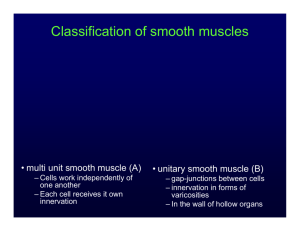
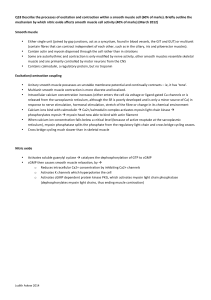
![Anti-Myosin, smooth muscle heavy chain 1 and 2 antibody [SMMS-1] ab106919](http://s2.studylib.net/store/data/012748505_1-970d1eb8955cc5d76163adc70b8649ed-300x300.png)

